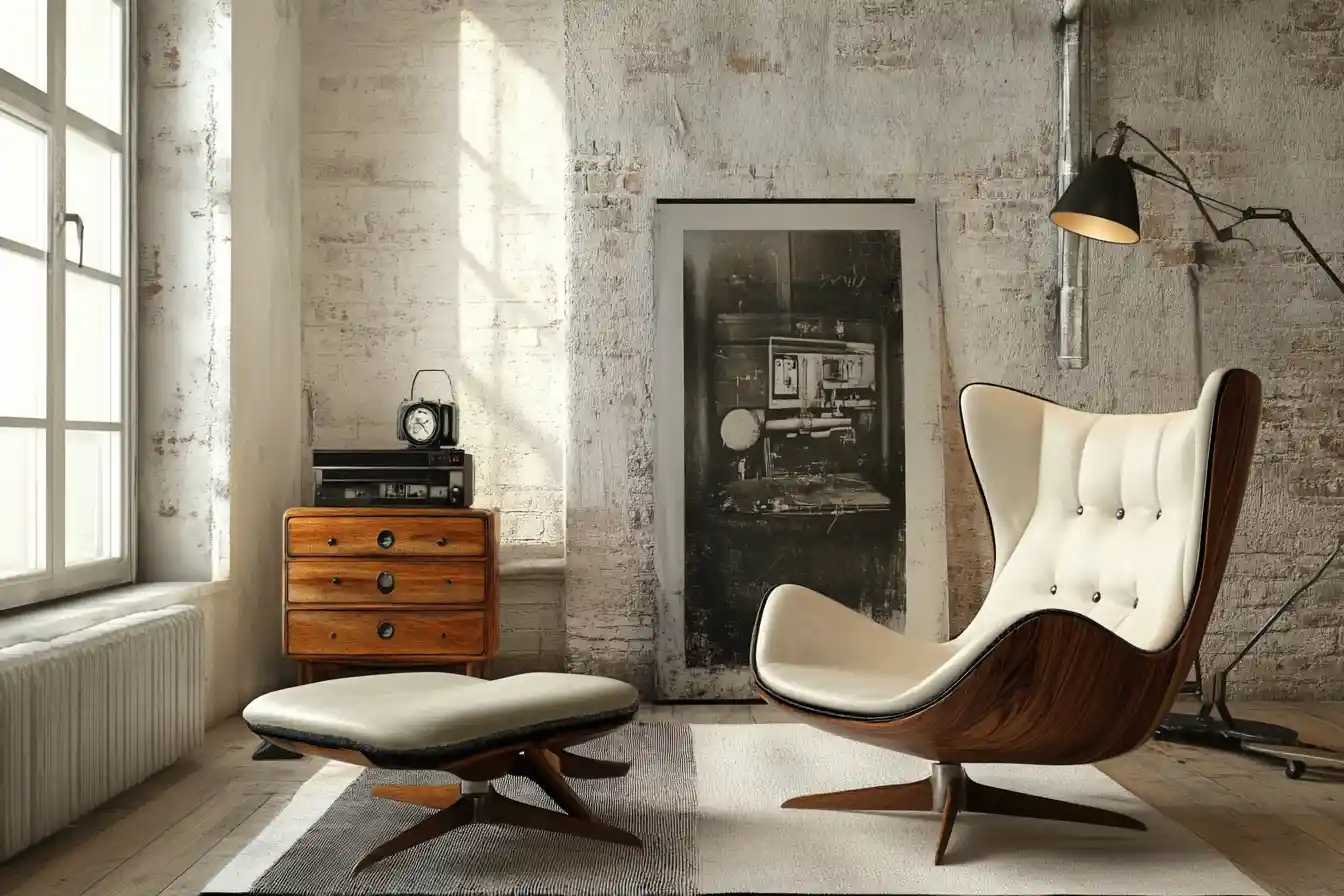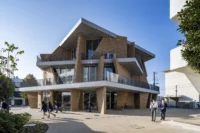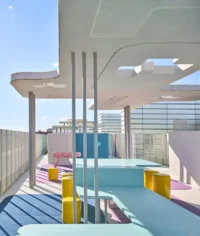In the ever-evolving world of architecture and interior design, staying ahead of the curve is more crucial than ever. As we navigate through 2024, we’re witnessing a fascinating blend of innovation and tradition, where cutting-edge technology meets timeless aesthetics. From sustainable materials to smart home integrations, the trends shaping our living spaces are as dynamic as they are inspiring.
Our homes and workplaces are no longer just functional spaces; they’re reflections of our values and lifestyles. Whether it’s the rise of biophilic design, which brings the outside in, or the resurgence of minimalism with a modern twist, these trends are redefining how we interact with our environments. Let’s dive into the top trends that are transforming architecture and interior design this year, making our spaces not just beautiful but also more thoughtful and efficient.

Sustainable and Eco-Friendly Designs
Sustainable and eco-friendly designs are reshaping our approach to architecture and interior design. These trends prioritize environmental responsibility and resource efficiency.
Green Building Materials
Green building materials promote environmental sustainability. Bamboo, reclaimed wood, and recycled metal are popular choices. Bamboo, a fast-growing plant, offers strength and flexibility. Reclaimed wood, sourced from old buildings, reduces deforestation. Recycled metal lessens the demand for new raw materials, cutting down mining impacts. These materials minimize ecological footprints and support eco-conscious design.
Energy-Efficient Systems
Energy-efficient systems contribute to sustainability in building design. Solar panels, LED lighting, and smart thermostats are key components. Solar panels harness renewable energy, reducing reliance on fossil fuels. LED lighting, which uses less energy than traditional bulbs, offers superior longevity and efficiency. Smart thermostats optimize energy use by learning user behavior and adjusting heating and cooling accordingly. These technologies lower energy consumption and promote eco-friendly living.
Smart Technology Integration
Smart technology has become a cornerstone of modern architecture and interior design. Advances in home automation and intelligent lighting enhance both convenience and energy efficiency.
Home Automation
Our homes are becoming smarter with each passing year. Automation systems manage climate control, security, and entertainment. Devices like Nest thermostats and Ring doorbells provide seamless control and monitoring. Connected systems reduce energy consumption and improve overall home efficiency. They offer alerts and the ability to adjust settings remotely, adding a layer of convenience.
Intelligent Lighting Solutions
Lighting has evolved beyond simple illumination. Intelligent lighting solutions adapt to our routines and needs. Philips Hue and LIFX bulbs change color and intensity based on the time of day. Sensors detect movement and adjust lighting to save energy. Integration with smart home systems ensures optimal lighting at all times. These solutions reduce energy consumption while enhancing ambiance and functionality.

Minimalist Aesthetics
Minimalist aesthetics have gained popularity in architecture and interior design, focusing on simplicity and functionality.
Open Floor Plans
Open floor plans enhance the feeling of spaciousness and facilitate natural light flow. Architects often remove non-essential walls to create a seamless connection between different areas. This approach not only maximizes usage but also encourages interaction and socialization within the space. By integrating common areas with kitchen, dining, and living rooms, open floor plans cater to modern lifestyles and preferences.
Monochromatic Color Schemes
Monochromatic color schemes emphasize simplicity and elegance. Using a single color in various shades and tones creates a cohesive and calming environment. Designers often choose neutrals like white, gray, or beige to establish a serene atmosphere. Accents in different textures and finishes add depth and interest without overpowering the minimalist aesthetic. This approach allows for easy modifications and personalization while maintaining the room’s overall harmony.
Incorporating these elements can transform spaces into modern, functional, and aesthetically pleasing environments.

Biophilic Design
Biophilic design connects architecture and nature, blending indoor spaces with the outdoors. This approach enhances well-being and productivity.
Natural Light Utilization
Natural light utilization maximizes sunlight in interiors. We use large windows, skylights, and open floor plans to achieve this. Architects often place windows in strategic positions, ensuring rooms receive optimal daylight. This reduces reliance on artificial lighting, cutting energy costs and creating healthier environments.
Indoor Plants
Indoor plants enhance biophilic spaces. We incorporate green walls, potted plants, and hanging plants in our designs. Examples include using succulents for low-maintenance setups and ferns for air purification. These elements improve air quality, add aesthetic value, and contribute to a calming ambiance.
Multi-Functional Spaces
Multi-functional spaces combine practicality and design, accommodating multiple activities in one area.
Convertible Furniture
Convertible furniture maximizes space efficiency and utility. Examples include sofa beds for living areas, fold-out desks for home offices, and modular seating options for dining spaces. These pieces adapt to user needs, transforming small rooms into versatile environments.
Workspace Integration
Modern homes often integrate workspaces. Design features include built-in desks for bedrooms, closets transformed into work nooks, and dual-purpose tables for living rooms. These solutions support productivity without sacrificing the aesthetics of minimalist and cohesive interiors.

Retro and Vintage Revival
In 2024, retro and vintage styles are experiencing a significant revival in both architecture and interior designing. Let’s explore key elements of this nostalgic trend.
Mid-Century Modern Elements
Mid-century modern design celebrates timeless elegance and simplicity. This style focuses on clean lines, organic shapes, and minimal ornamentation. Iconic furniture pieces, such as the Eames Lounge Chair and the Arne Jacobsen Egg Chair, are popular choices. These items often feature simple, functional forms and natural materials like wood and leather. Bright, bold colors and geometric patterns add vibrancy to spaces, enhancing the visual interest without overwhelming the simplicity of the design.
Rustic Accents
Rustic accents bring warmth and coziness by utilizing natural materials and textures. Reclaimed wood beams, exposed brick walls, and stone fireplaces are common features. These elements create an inviting, homey atmosphere while adding character to modern interiors. Integrating vintage décor pieces like antique mirrors, distressed furniture, and handcrafted textiles enriches the rustic charm. The combination of these items ensures a harmonious blend between the old and new, making spaces feel timeless and deeply rooted in tradition.

Personalized and Custom Designs
In 2024, personalized and custom designs are at the forefront of architecture and interior designing. These tailored elements provide unique touches that make spaces truly one-of-a-kind.
Bespoke Furniture
Bespoke furniture offers custom-built pieces tailored to individual preferences, matching specific aesthetics and functional needs. Clients can select materials, colors, and finishes, ensuring each item reflects their personal style. For instance, custom-built shelving units can perfectly fit unconventional spaces, maximizing utility while adding a distinct design element.
Unique Art Pieces
Unique art pieces elevate interior spaces by introducing originality and personal flair. These could include commissioned artworks, custom murals, or limited edition prints. Displaying such art not only enhances decor but also supports emerging artists. For example, a custom mural in a living room can serve as a focal point, creating a memorable visual impact.
Conclusion
Architecture and interior design trends for 2024 reflect a remarkable blend of innovation and tradition. Sustainable materials dominate projects, encouraging green building practices. Smart home integrations, such as energy-efficient systems, transform living spaces, providing convenience and efficiency. Minimalist aesthetics, featuring open floor plans and monochromatic color schemes, emphasize simplicity and functionality.
Biophilic design, which connects interiors with nature, gains traction. Natural light and indoor plants enhance spaces, creating healthier and more inspiring environments. Retro and vintage styles, particularly mid-century modern elements, make a comeback. This resurgence brings clean lines, organic shapes, and iconic furniture to the forefront.
Rustic accents, like reclaimed wood and vintage décor, introduce warmth and character. Personalized designs ensure unique living spaces. Bespoke furniture and commissioned art pieces offer a one-of-a-kind appeal, supporting inclusive creativity in home design. Each emerging trend reflects our collective drive to create harmonious, sustainable, and personalized living environments.
















Leave a comment